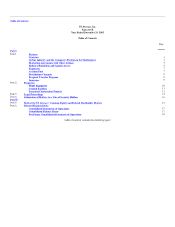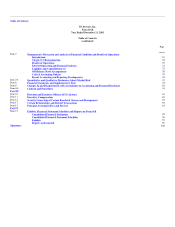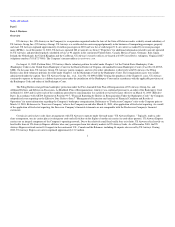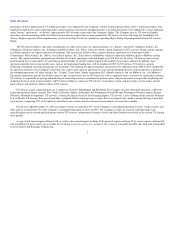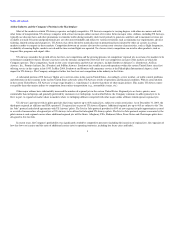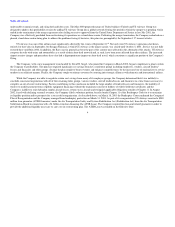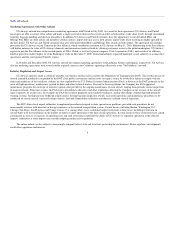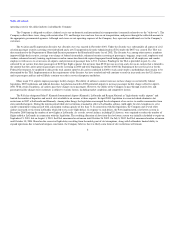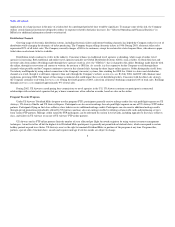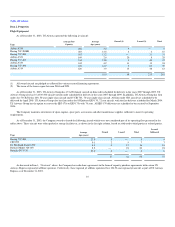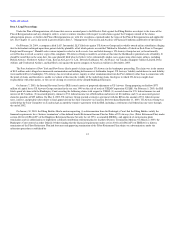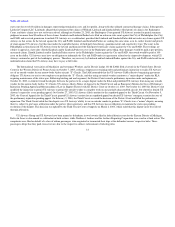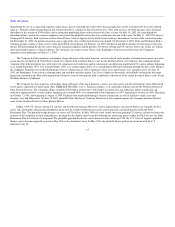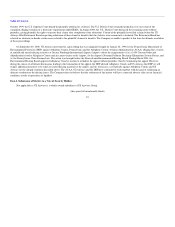US Airways 2003 Annual Report Download - page 14
Download and view the complete annual report
Please find page 14 of the 2003 US Airways annual report below. You can navigate through the pages in the report by either clicking on the pages listed below, or by using the keyword search tool below to find specific information within the annual report.
Table of Contents
US Airways uses the incremental cost method to account for liabilities associated with Dividend Miles. Estimated future travel awards are valued at the
estimated average incremental cost of carrying one additional passenger. Incremental costs include unit costs for passenger food, beverages and supplies, fuel,
reservations, communications, insurance and denied boarding compensation. No profit or overhead margin is included in the accrual for incremental costs. US
Airways routinely reviews the assumptions made to calculate its FTP liability for reasonableness and makes adjustments to these assumptions as necessary.
In January 1999, US Airways announced changes to its FTP. Mileage credits earned prior to January 1, 2000 do not expire. Mileage credits earned on
or after January 1, 2000 do not expire provided that the participant earns or redeems any amount of Dividend Miles at least once every 36 months.
As of December 31, 2003 and 2002, Dividend Miles participants had accumulated mileage credits for approximately 6,272,000 and 7,011,000 awards,
respectively. Because US Airways expects that some potential awards will never be redeemed, calculations of FTP liabilities are based on approximately 80%
of total accumulated mileage credits. Mileage credits for Dividend Miles participants who have accumulated less than the minimum number of mileage credits
necessary to claim an award and a portion of mileage credits of Dividend Miles participants who have excessive balances are excluded from calculations of
FTP liabilities. The liability for the accumulated Dividend Miles was $85 million and $90 million as of December 31, 2003 and 2002, respectively.
Incremental changes in FTP liabilities resulting from participants earning or redeeming mileage credits or changes in assumptions used for the related
calculations are recorded as part of the regular review process.
The number of FTP awards redeemed for free travel during the years ending December 31, 2003, 2002 and 2001 was approximately 1.2 million, 1.3
million and 1.1 million, respectively, representing approximately 7% of US Airways' RPMs in each of those years. These low percentages as well as the use
of certain inventory management techniques (see above) minimize the displacement of revenue passengers by passengers traveling on Dividend Miles award
tickets.
Insurance
The Company maintains insurance of the types and in amounts deemed adequate to protect itself and its property. Principal coverage includes: liability
for injury to members of the public, including passengers; damage to property of the Company and others; loss of or damage to flight equipment, whether on
the ground or in flight; fire and extended coverage; directors and officers; fiduciary; and workers' compensation and employer's liability. In addition to
customary deductibles, the Company self-insures for all or a portion of its losses from claims related to environmental liabilities and medical insurance for
employees.
Since September 11, 2001, the Company and other airlines have been unable to obtain coverage for liability to persons other than employees and
passengers for claims resulting from acts of terrorism, war or similar events (war risk coverage) at reasonable rates from the commercial insurance market. US
Airways has, as have most other U.S. airlines, therefore purchased its war risk coverage through a special program administered by the FAA. The Emergency
Wartime Supplemental Appropriations Act extended this insurance protection until August 2004. The Secretary of Transportation may extend this policy until
December 31, 2004. If the federal insurance program terminates, the Company would likely face a material increase in the cost of war risk coverage, and
because of competitive pressures in the industry, the Company's ability to pass this additional cost to passengers would be limited.
9


